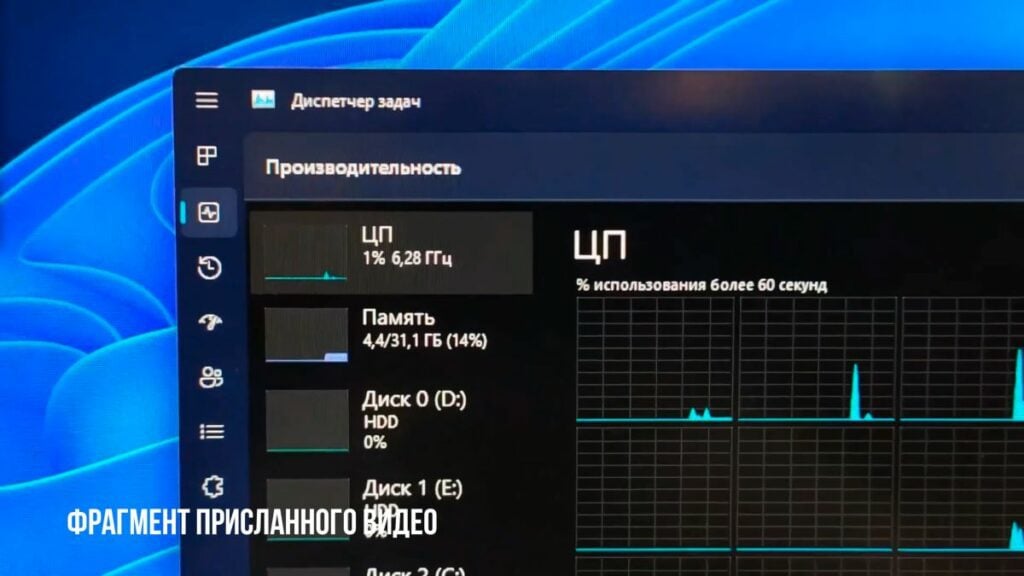Pro Hi-Tech, a Russian tech blogger, shared a video from one of his subscribers showing an AMD Ryzen 9 7950X coming out of sleep mode to reach a clock speed of 6.28 GHz. It’s clearly a bug because the Ryzen 9 7950X has a 5.7 GHz clock speed, making it impossible for the 16-core chip to exceed 6 GHz without manual overclocking.
Unfortunately, the user did not provide the motherboard model or firmware version. As a result, we’re unsure whether the bug is caused by a specific AMD AGESA firmware.
According to reports, the trick entails allowing the AMD Ryzen processor to reach its maximum clock speed before putting the system to sleep. As a result, the clock speed increases exponentially. In benchmarks such as Cinebench or Corona, the AMD processor appears to be faster. In reality, the processor is not exceeding its specifications; rather, what appears to be the return of the RTC bug is deceiving the benchmarks.
The RTC bug first appeared in 2013, around the time of Windows 8. The flaw was more noticeable on Intel processors at the time, such as Sandy Bridge, Ivy Bridge, and Haswell.
AMD processors were affected, but not to the same extent as Intel processors.

The RTC bug primarily involved changing the bus frequency of the processor. Changes made in the BIOS were acceptable, but changing the frequency on a software level would cause Windows 8’s timer to malfunction.
Benchmarks such as Cinebench and Corona measure how long it takes a processor to render a scene. Because the internal timer is slower, the software believes the processor takes less time to complete the benchmark. A significant disparity would be obvious if users measured the time with a stopwatch and compared it to the time displayed by the software.
Microsoft allegedly fixed the RTC bug in later versions of Windows, but Zen 2 chips remained vulnerable. We’re now on Zen 4, and the bug doesn’t seem to have gone away. It’s perplexing that a bug discovered nearly ten years ago is still lurking in the background. The bug has no effect on your system or performance. On the contrary, it persuades inexperienced users that their processor is overly powerful.
Also Read:








